
Coarsegold, California
Revised 5-19-13
![]()
.jpg) NOTES
NOTES
Baby Blue-Eyes,
|
.jpg)
Baby Blue-Eyes,
|
.jpg) NOTES
NOTES
Common Bedstraw
|
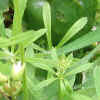
Common Bedstraw
|
.jpg) NOTES
NOTES
Tiny Bedstraw
|
.jpg)
Tiny Bedstraw
|
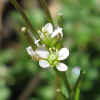 NOTES
NOTES
Western Bittercress |
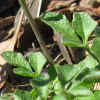
Western Bittercress, Leaves |
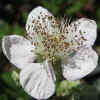
Himalayan Blackberry |
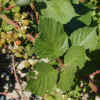
Himalayan Blackberry,
Leaves |
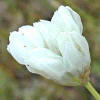 NOTES
NOTES
Blue-Dick, white version AKA Common Brodiaea Dichelostemma capitatum Lily family |
|
.jpg) NOTES
NOTES
Buckbrush |
.jpg)
Buckbrush, Leaves
|
.jpg) NOTES
NOTES
California Buckeye
|
.jpg)
California Buckeye |
.jpg)
California Buckeye,
|
.jpg)
California Buckeye |
.jpg) NOTES
NOTES
Bailey's Buckwheat
|
.jpg)
Bailey's Buckwheat,
Leaves |
.jpg) NOTES
NOTES
California Buckwheat
|
.jpg)
California Buckwheat
|
.jpg) NOTES
NOTES
Water Buttercup
|
.jpg)
Water Buttercup
|
.jpg) NOTES
NOTES
Buttonbush
|
.jpg)
Buttonbush
|
.jpg) NOTES
NOTES
Bitter Cherry
|
Bitter Cherry
|
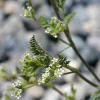 NOTES
NOTES
Bur Chervil
|
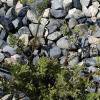
Bur Chervil
|
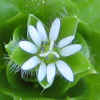 NOTES
NOTES
Common Chickweed
|
.jpg)
Common Chickweed
|
.jpg) NOTES
NOTES
Sticky Mouse-Ear Chickweed
|
.jpg)
Sticky Mouse-Ear Chickweed
|
.jpg) NOTES
NOTES
Sticky Chinese Houses
|
.jpg)
Sticky Chinese Houses
|
|
Diamond Clarkia |
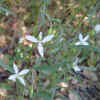
Diamond Clarkia |
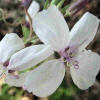 NOTES
NOTES
Dudley's
Clarkia |
.jpg)
Dudley's Clarkia,
|
.jpg)
Dudley's Clarkia,
another form
|
.jpg) NOTES
NOTES
Williamson's Clarkia, Variant
|
||
.jpg) NOTES
NOTES
Elegant Clarkia
|
.jpg)
Elegant Clarkia
|
.jpg)
Elegant Clarkia, Variant |
.jpg)
Elegant Clarkia, Double
|
.jpg) NOTES
NOTES
Clammy Clover
|
.jpg)
Clammy Clover, Leaves
|
.jpg) NOTES
NOTES
Tomcat Clover
|
.jpg)
Tomcat Clover, Leaves |
.jpg) NOTES
NOTES
White Clover*
|
.jpg)
White Clover, Leaves*
|
.jpg) NOTES
NOTES
White Sweet Clover
|
.jpg)
White Sweet Clover, Leaves
|
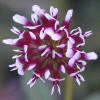 NOTES
NOTES
White-Tipped Clover
|
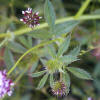
White-Tipped Clover, Leaves |
.jpg) NOTES
NOTES
Cocklebur |
.jpg)
Cocklebur, Leaves |
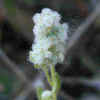 NOTES
NOTES
Slender Cottonweed
|
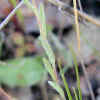
Slender Cottonweed, Leaves
|
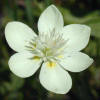 NOTES
NOTES
Cream Cup |
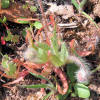
Cream Cup, Leaves |
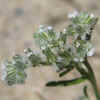 Cryptantha sp., W02 |
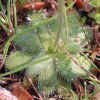
Cryptantha sp., W02, Leaves |
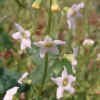 NOTES NOTES
Wild Cucumber
|
.jpg)
Wild Cucumber, Leaves
|
.jpg) NOTES
NOTES
Deerbrush
|
.jpg)
Deerbrush
|
.jpg) NOTES
NOTES
California Dodder, flower buds |
.jpg)
California Dodder,
twining
|
.jpg)
Common Dodder, suckers |
.jpg)
Common Dodder, infestation |
.jpg) NOTES
NOTES
Durango Root
|
.jpg)
Durango Root,
Leaves |
.jpg) NOTES
NOTES
Blue Elderberry, flowers
|
.jpg)
Blue Elderberry, Leaves
|
.jpg)
Pearly Everlasting
|
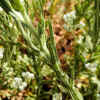
Pearly Everlasting, Leaves
|
.jpg) NOTES
NOTES
Five Spot*
|
.jpg)
Five Spot*
|
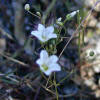 NOTES
NOTES
Threadstem Flax |
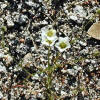
Threadstem Flax |
.jpg) NOTES
NOTES
Bird's-Eye Gilia
|
.jpg)
Bird's-Eye Gilia
|
.jpg) NOTES
NOTES
Foothill Gilia |
.jpg)
Foothill Gilia, Leaves |
.jpg) NOTES
NOTES
California Wild Grape
|
.jpg)
California Wild Grape,
|
.jpg) NOTES
NOTES
Whitestem
Hedge-Nettle
|
.jpg)
Whitestem
Hedge-Nettle |
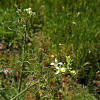 NOTES
NOTES
Indian Hedge
Mustard
|
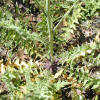
Indian Hedge
Mustard, Leaves
|
.jpg) NOTES
NOTES
Hedge-Parsley
|
.jpg)
Hedge-Parsley, Leaves
|
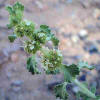
Horehound |
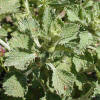 NOTES
NOTES
Horehound
|
.jpg) NOTES
NOTES
Jimsonweed
|
.jpg)
Jimsonweed
|
.jpg) NOTES
NOTES
Lacepod, Flower |
.jpg)
Lacepod, Leaves
|
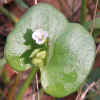 NOTES
NOTES
Miner's Lettuce
|
.jpg)
Miner's Lettuce
|
.jpg) NOTES
NOTES
Butterfly Mariposa Lily
|
.jpg)
Butterfly
Mariposa Lily
|
.jpg) NOTES
NOTES
Spanish Lotus
|
.jpg)
Spanish Lotus |
.jpg) NOTES
NOTES
Whorled Lupine
|
.jpg)
Whorled Lupine
|
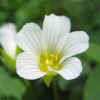 NOTES
NOTES
Douglas' Meadow-Foam
|
.jpg)
Douglas' Meadow-Foam
|
.jpg) NOTES
NOTES
Narrow-Leaved Milkweed
|
.jpg)
Narrow-Leaved Milkweed
|
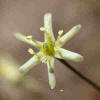 NOTES
NOTES
Common Muilla |
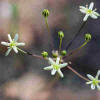
Common Muilla |
.jpg) NOTES
NOTES
Turkey Mullein
|
.jpg)
Turkey Mullein
|
.jpg) NOTES
NOTES
Glassy Onion
|
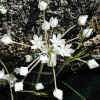
Glassy Onion
|
.jpg) NOTES
NOTES
Pallid Owl's Clover
|
.jpg)
Pallid Owl's Clover
|
.jpg) NOTES
NOTES
Gaping Penstemon
|
.jpg)
Gaping Penstemon
|
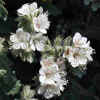 NOTES
NOTES
Caterpillar Phacelia
|
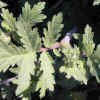
Caterpillar Phacelia,
Leaves
|
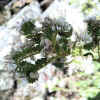 NOTES
NOTES
Vari-Leaf Phacelia |
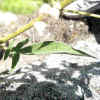
Vari-Leaf Phacelia,
Leaves |
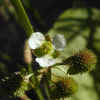 NOTES
NOTES
Large Water
Plantain
|
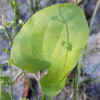
Large Water
Plantain |
.jpg) NOTES
NOTES
Narrow-Leaved Plantain
|
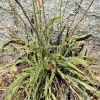
Narrow-Leaved Plantain
|
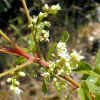 NOTES
NOTES
Poison Oak, Flowers |
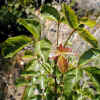
Poison Oak, Leaves
|
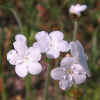 NOTES
NOTES
Popcorn Flower
|
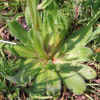
Popcorn Flower
|
.jpg) NOTES
NOTES
California Poppy,
|
.jpg)
California Poppy,
|
.jpg) NOTES
NOTES
Rattlesnake Weed
|
.jpg)
Rattlesnake Weed, Burs
|
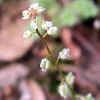 NOTES
NOTES
Common Sandweed |
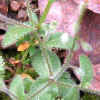
Common Sandweed, |
.jpg) NOTES
NOTES
California Saxifrage
|
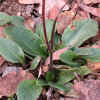
California Saxifrage
|
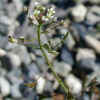 NOTES
NOTES
Shepherd's Purse
|
.jpg)
Shepherd's Purse, Leaves
|
.jpg) NOTES
NOTES
Wavy-Leaved Soap Plant
|
.jpg)
Wavy-Leaved Soap Plant
|
.jpg) NOTES
NOTES
Spikerush
|
.jpg)
Spikerush, Leaves |
.jpg) NOTES
NOTES
Squawbush, Flowers
|
.jpg)
Squawbush, Leaves |
.jpg) NOTES
NOTES
Smooth Woodland Star
|
.jpg)
Smooth Woodland Star, Leaves
|
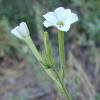 NOTES
NOTES
Indian Tobacco
|
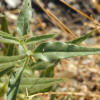
Indian
Tobacco, Leaves
|
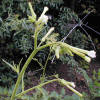 NOTES
NOTES
Many-Flowered Tobacco
|
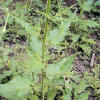
Many-Flowered
Tobacco, Leaves
|
.jpg) NOTES
NOTES
Watercress
|
.jpg)
Watercress
|
.jpg) NOTES
NOTES
Yampa
|
.jpg)
Yampa
|
.jpg)
Unidentified, W07*
|
.jpg)
Unidentified, W07*
|
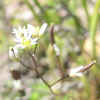
Unidentified, W28 |
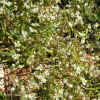
Unidentified, W28, Leaves |

Unidentified, W30 |
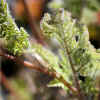
Unidentified, W30, Leaves |
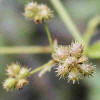
Unidentified, W31 |

Unidentified, W31, |
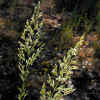
Unidentified, W32 |